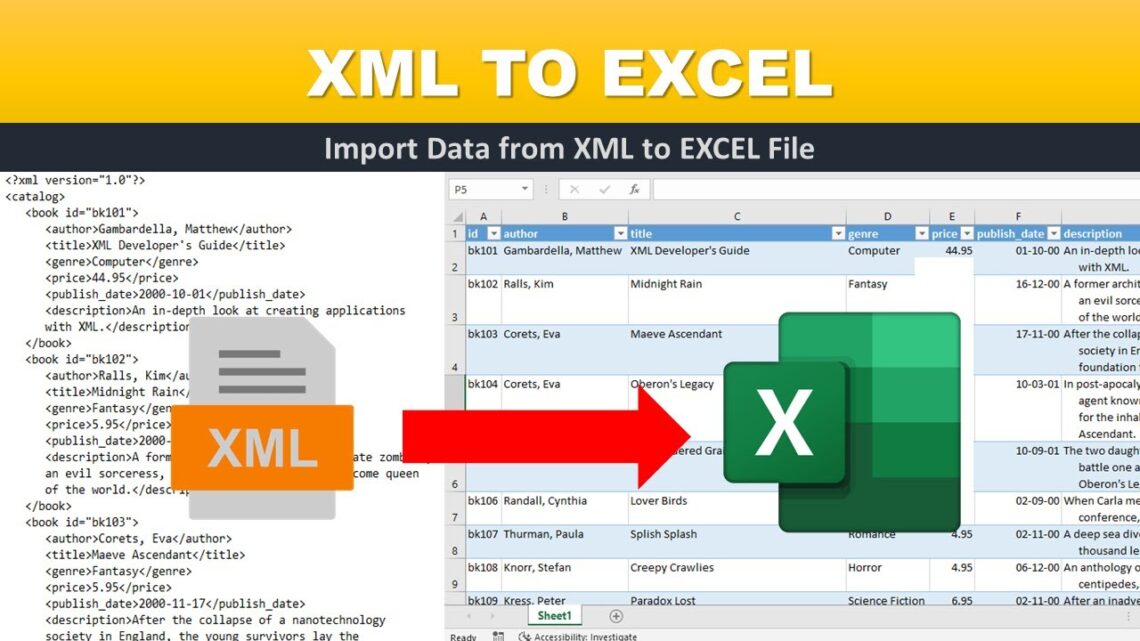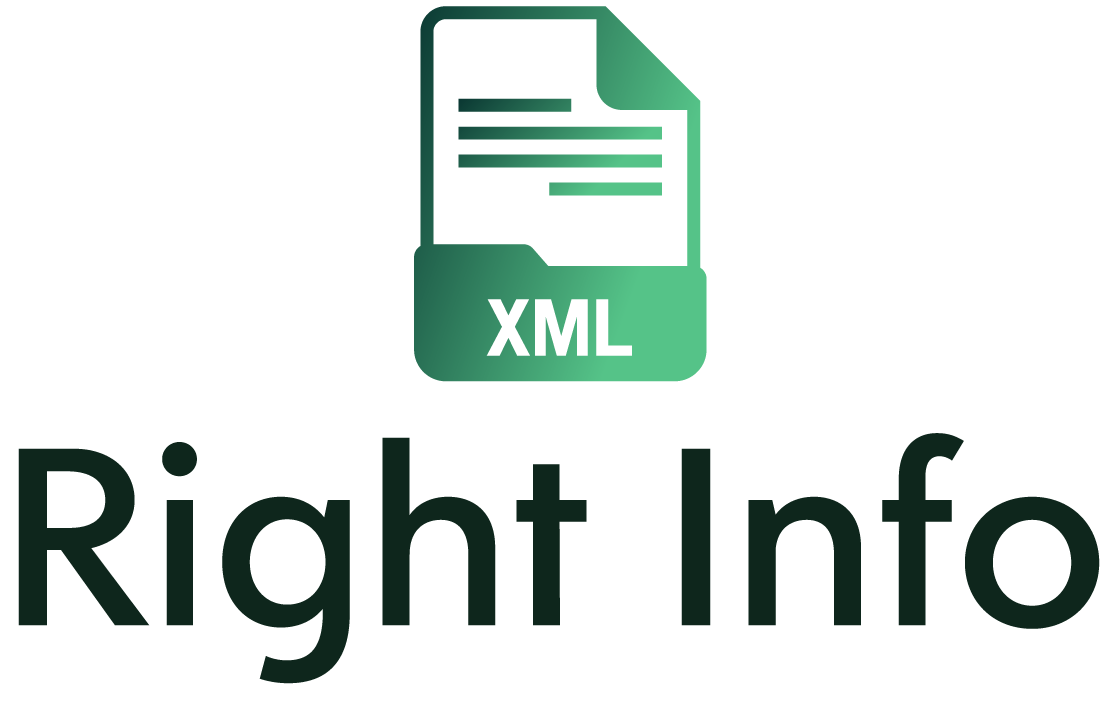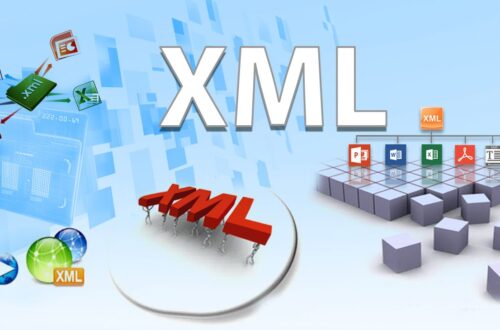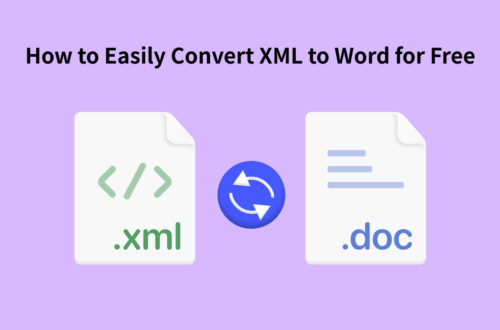
Converting XML to Excel for Comprehensive Insights
Converting XML to Excel might seem daunting at first, but with the right tools and understanding, it becomes a straightforward process that can greatly enhance your data analysis capabilities. Here’s a comprehensive guide to help you get started:
Realization XML and Excel Formats
Before diving into the conversion process, it’s crucial to grasp the fundamental differences between XML and Excel formats. XML is a markup language that stores structured data in a human-readable format, using tags to define elements and their relationships. On the other hand, Excel is a spreadsheet program that organizes data into rows and columns, offering powerful features for calculations, charting, and analysis.
Choosing the Right Conversion Tool
Choosing the right conversion tool holds the key to a seamless XML to Excel transformation journey. With a plethora of options available, it’s crucial to weigh various factors that align with your specific needs. From compatibility and customization to speed and support, each aspect plays a vital role in ensuring a successful and efficient conversion process. Taking the time to evaluate these considerations will empower you to make a confident decision that complements your data analysis endeavors.
In your quest for the ideal conversion tool, consider these important factors:
- Compatibility and Format Support: Ensure the tool works seamlessly with your version of Excel and supports the desired format.
- User-Friendly Interface: Opt for an intuitive interface to simplify the conversion process, especially if you’re new to the task.
- Customization Options: Look for tools that allow you to tailor the conversion according to your XML’s unique structure.
- Data Transformation Capabilities: Choose a tool with features for data manipulation, ensuring a smooth transition to the Excel format.
- Speed and Performance: Prioritize tools that offer swift processing speeds, essential for managing large XML files efficiently.
- Automation and Batch Conversion: If you deal with multiple XML files, automation and batch conversion features are indispensable.
- Reviews and Recommendations: Seek insights from user reviews and recommendations to gauge the tool’s reliability and performance.
- Customer Support and Updates: A tool with robust customer support and regular updates ensures a smooth experience.
- Cost Considerations: Evaluate costs against features to find a tool that offers optimal value for your investment.
Step-by-Step Conversion Process
Here’s a step-by-step breakdown of the conversion process:
Step 1: Preparing Your XML Data
Ensure that your XML data is well-structured and validated. Fix any inconsistencies or errors in your XML document before proceeding.
Step 2: Importing XML Data
Open your chosen conversion tool and import the XML file. The tool will parse the XML structure and present it in a readable format.
Step 3: Mapping XML Elements
Map XML elements to Excel columns. This involves defining how XML data should be organized within the Excel spreadsheet.
Step 4: Data Transformation
Depending on the complexity of your XML data, you may need to transform it to fit the Excel format. This could involve splitting data, merging cells, or applying formulas.
Step 5: Exporting to Excel
Initiate the conversion process. The tool will generate an Excel spreadsheet with your XML data neatly organized.
Optimizing Excel for Analysis
Once you have the XML data in Excel, it’s time to leverage its analytical capabilities:
· Organize Data: Use Excel’s sorting and filtering functions to organize the data for easier analysis.
· Create Pivot Tables: Pivot tables allow you to summarize and analyze data based on various factors. They provide quick insights into patterns and trends.
· Generate Charts: Visualize your data using Excel’s charting tools. Charts make it easier to identify trends and outliers.
Tips and Best Practices
- Data Cleaning: Ensure your XML data is clean and consistent before conversion to avoid errors in the Excel output.
- Mapping Accuracy: Take your time to accurately map XML elements to Excel columns for a well-structured spreadsheet.
- Backup Original XML: Always keep a backup of the original XML file in case you need to revisit or modify the data.
- Regular Updates: If your XML data changes frequently, establish a process to regularly update the Excel file to reflect the latest information.
FAQs
How can I validate my XML data before conversion?
XML validation can be done using tools like XMLSpy or online XML validators. They check the XML against its designated schema for errors.
Can I convert Excel back to XML if needed?
Yes, many conversion tools offer the option to reverse the process and convert Excel back to XML format.
Are there any limitations to the size of XML files for conversion?
Some conversion tools might have limitations on file size, so it’s important to choose a tool that can handle the size of your XML data.
Can I automate the conversion process?
Absolutely, you can indeed automate the XML to Excel conversion process. Automation streamlines repetitive tasks, saves time, and ensures consistency in your workflow. By employing scripting languages like Python, you can create scripts that handle the conversion process efficiently. This is particularly beneficial when dealing with large datasets or when you need to perform frequent XML to Excel conversions.
Automation allows you to define the steps of the conversion process within a script. You can specify the source XML files, map XML elements to Excel columns, and even set up data transformation if necessary. Once the script is created, you can run it whenever needed, and it will execute the conversion steps automatically, generating Excel files without manual intervention.
Moreover, automation empowers you to schedule conversions at specific intervals. For instance, if you receive updated XML files daily or weekly, you can set up a scheduled task to run the script automatically at the designated times. This ensures that your Excel files are always up-to-date and ready for analysis without manual effort.
Is it possible to schedule regular XML to Excel conversions?
Yes, you can set up scheduled tasks or scripts to perform automatic conversions at specified intervals.
Are there any security considerations when converting XML to Excel?
Ensure that the conversion tool you’re using is secure and doesn’t compromise the confidentiality of your data during the process.
Conclusion
Converting XML to Excel is a valuable skill that can provide you with comprehensive insights from your data. By following the step-by-step guide outlined above, you can efficiently convert XML files into Excel spreadsheets, unlocking the potential for deeper analysis and informed decision-making. Remember to choose the right conversion tool, ensure accurate mapping, and optimize Excel for analysis. With these practices in place, you’ll harness the power of data-driven insights like never before.





